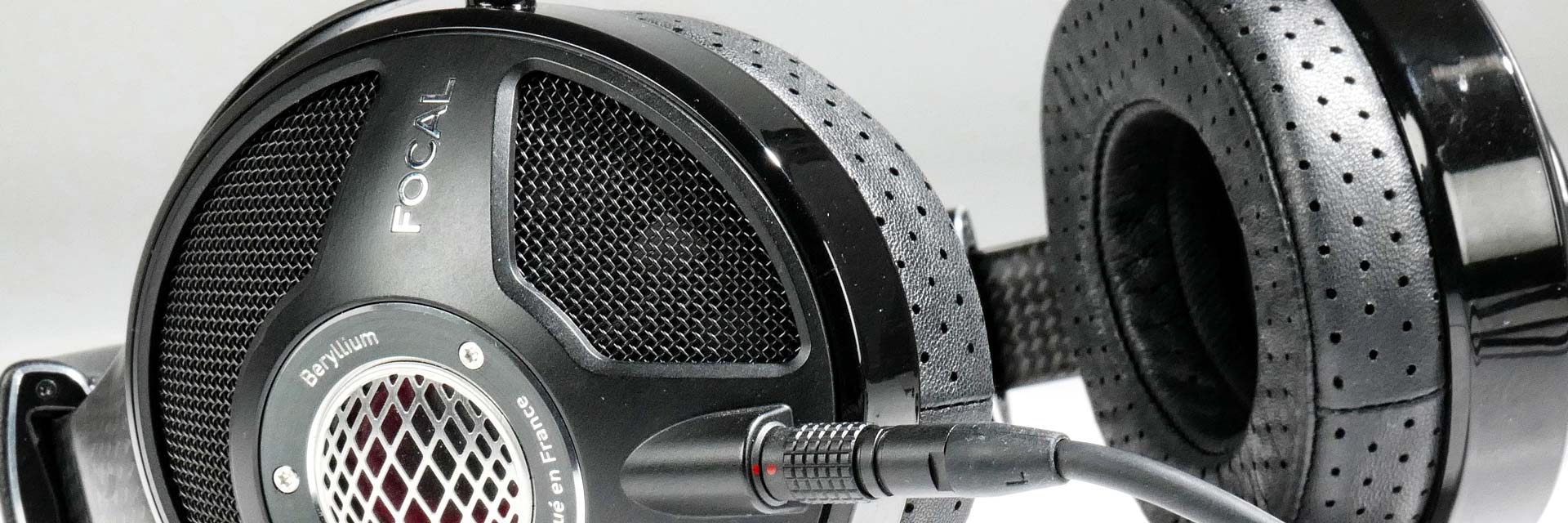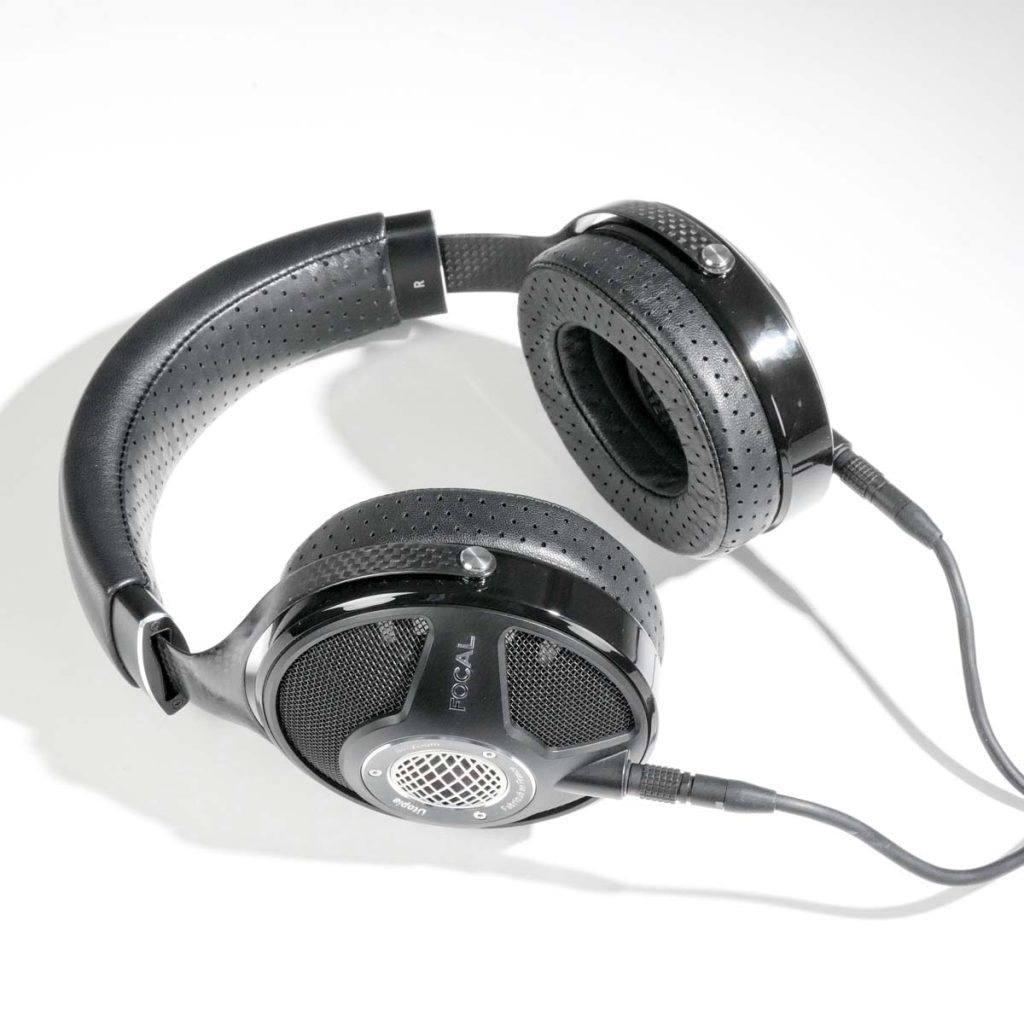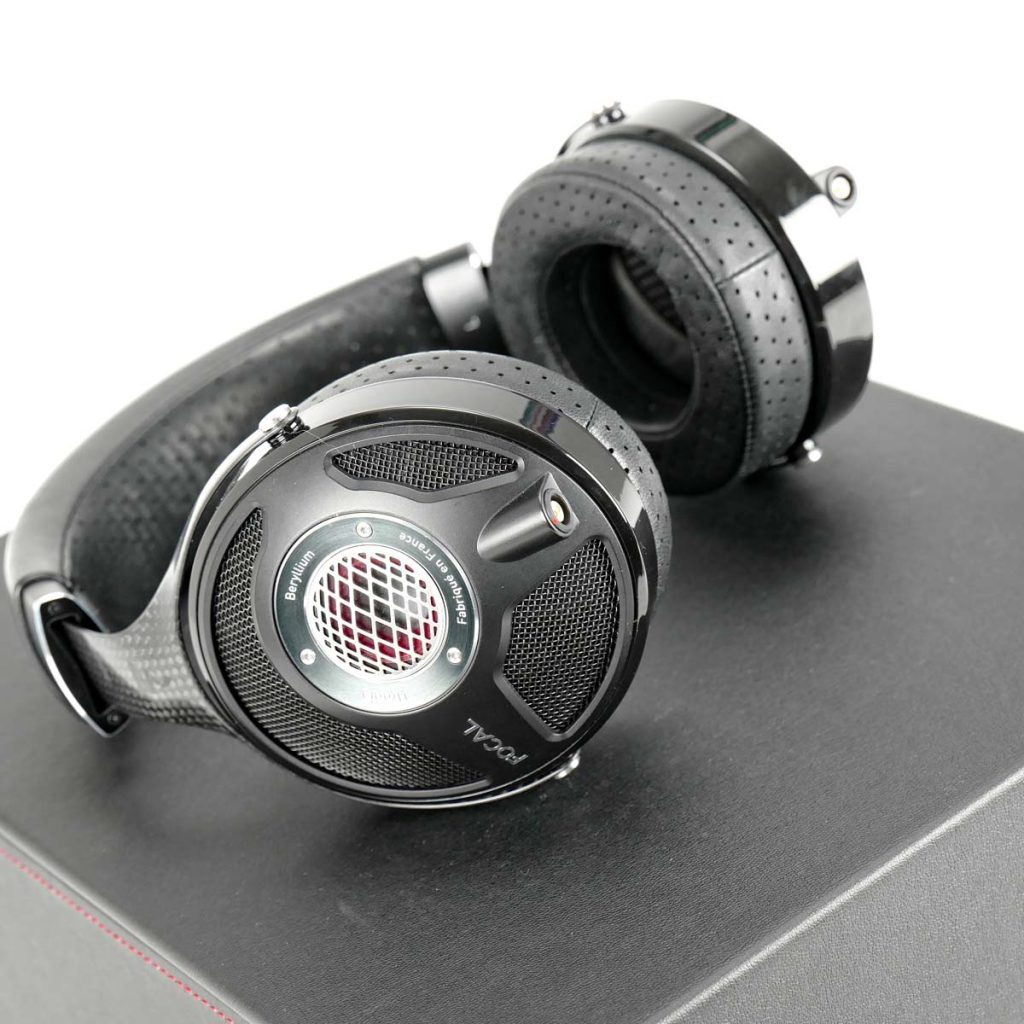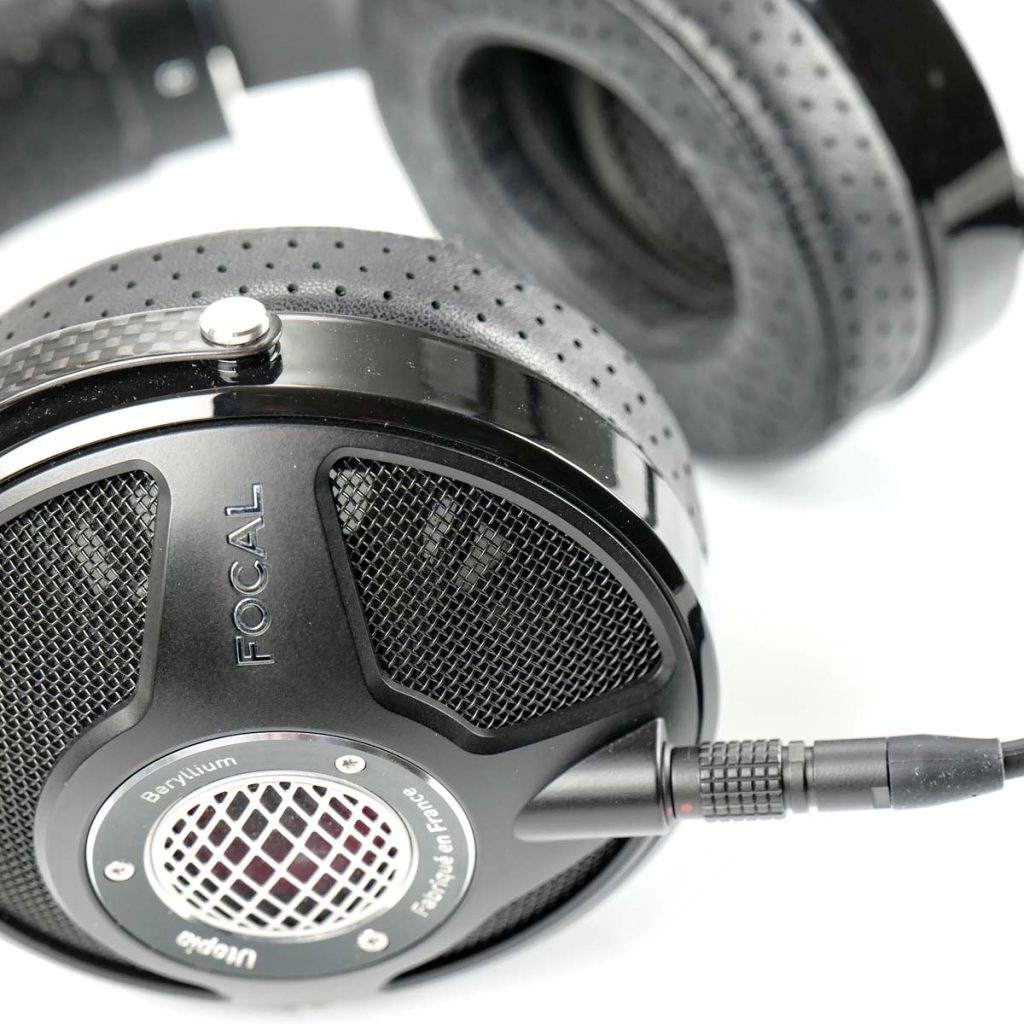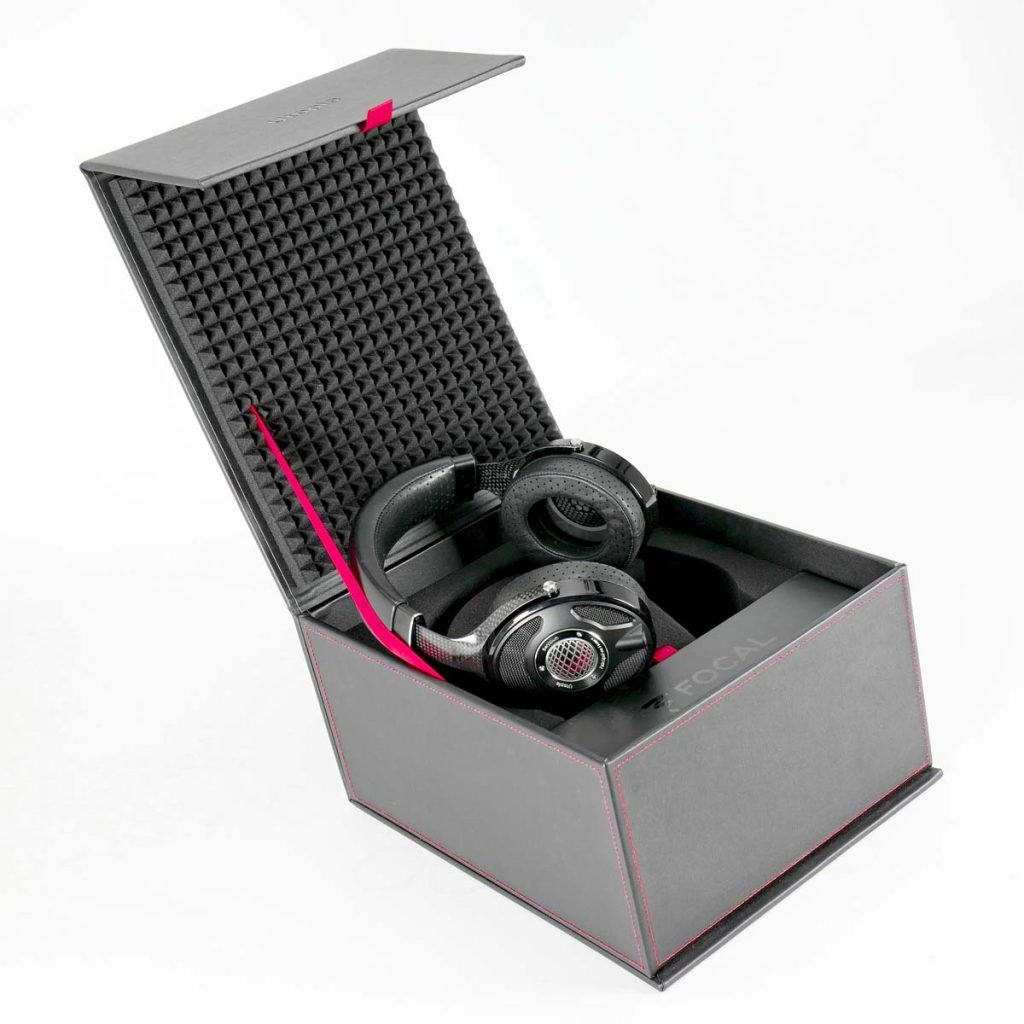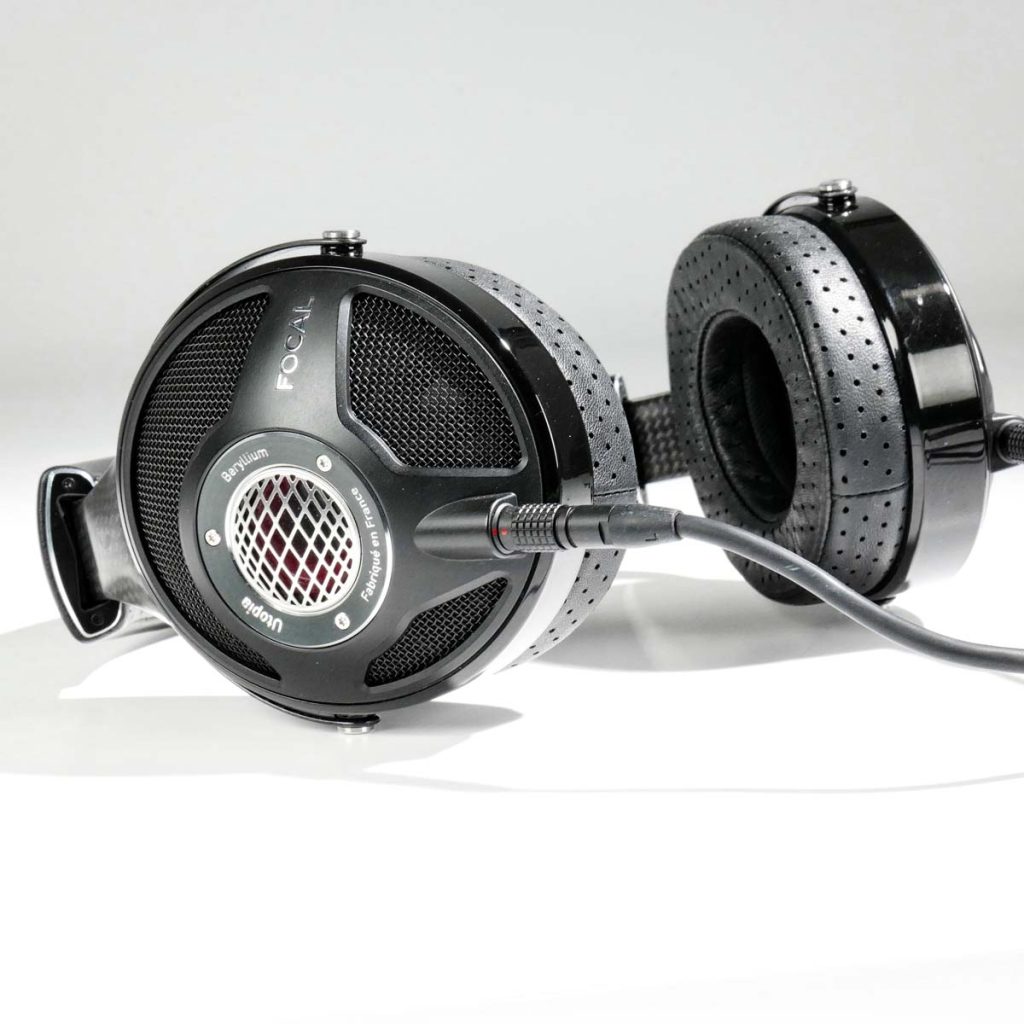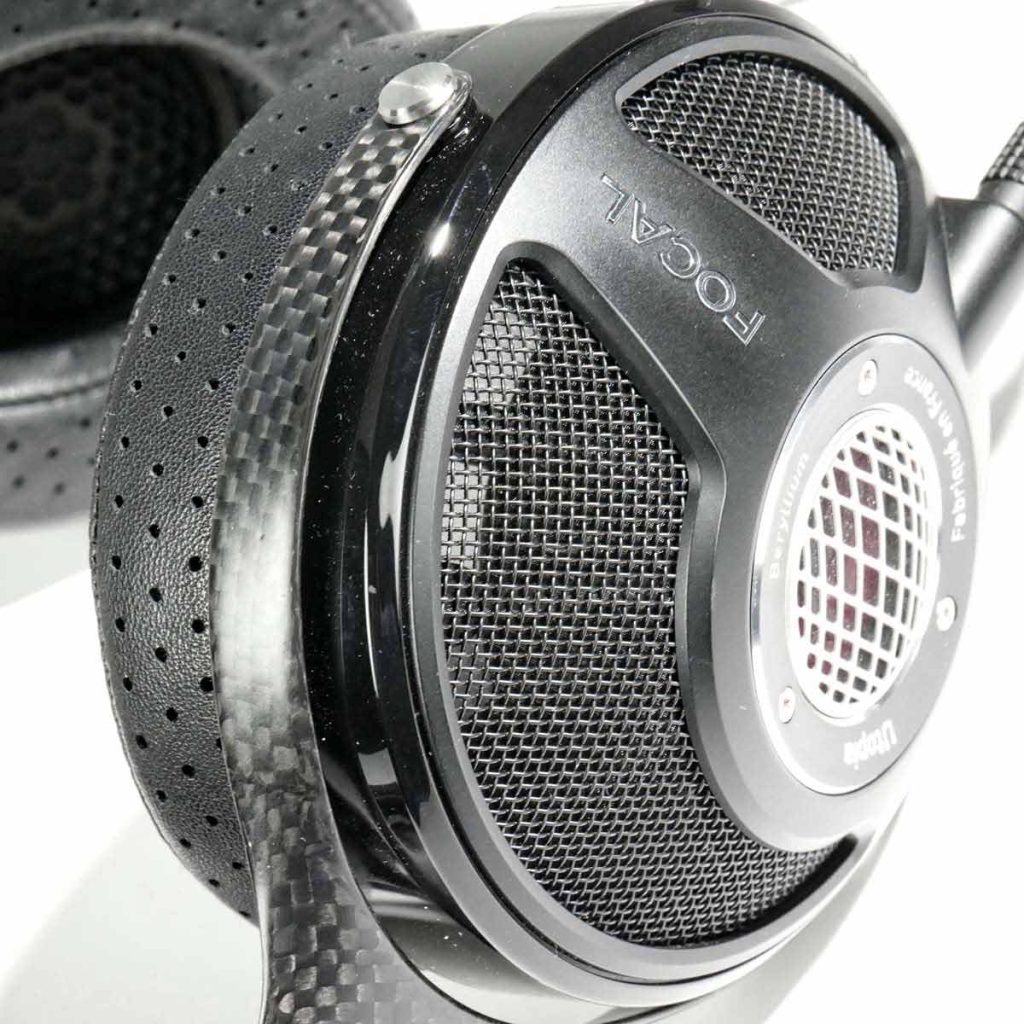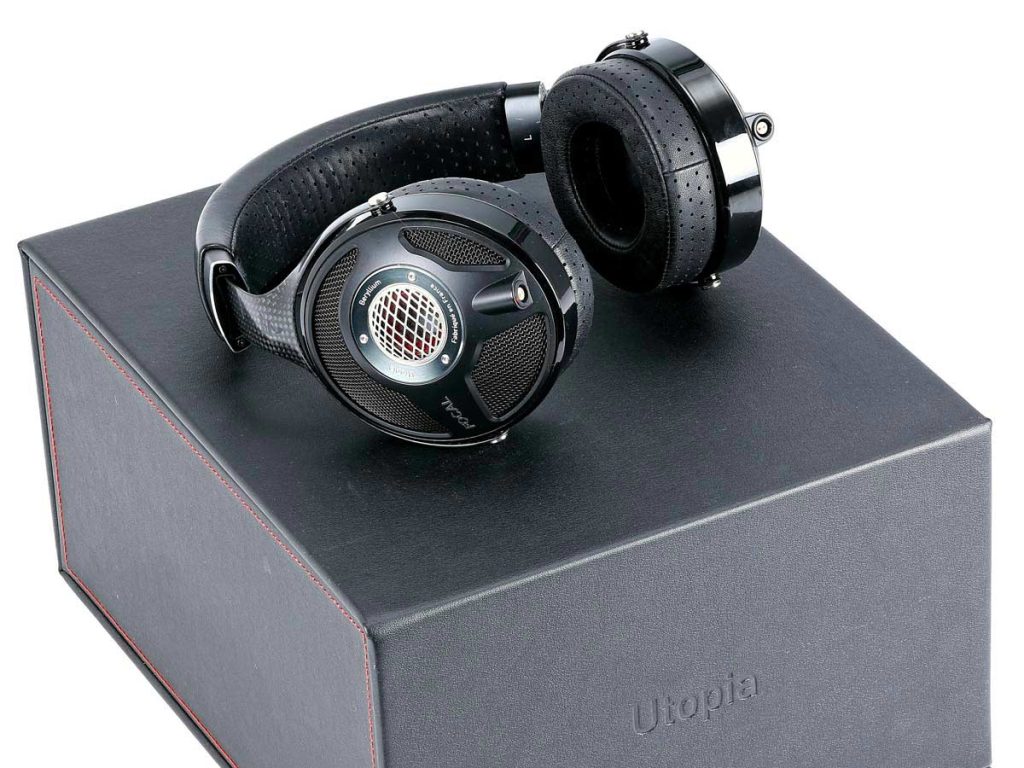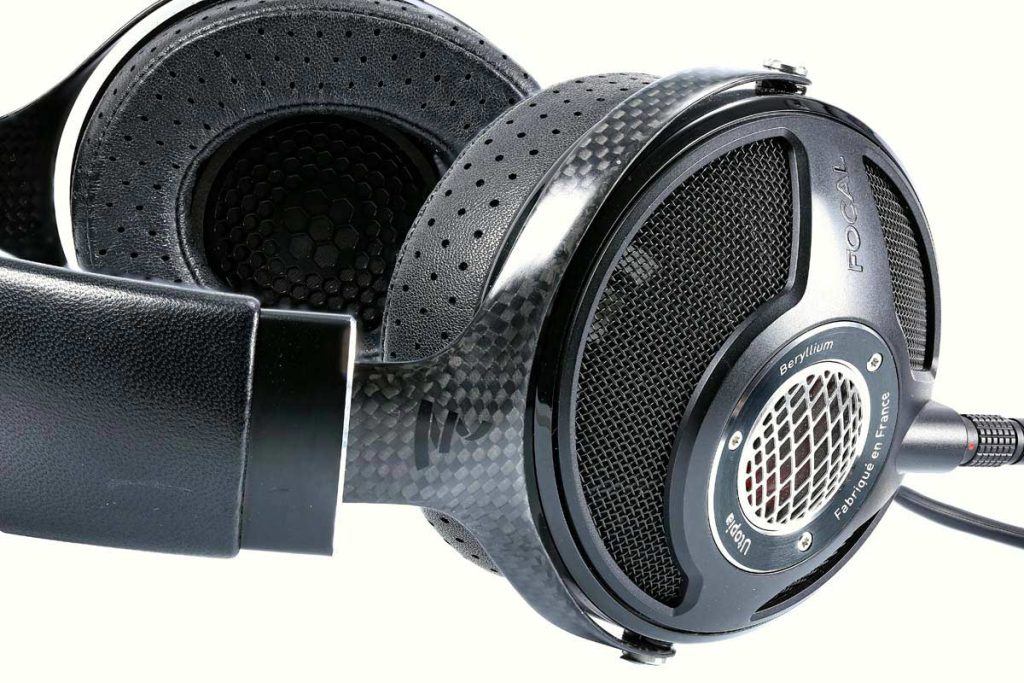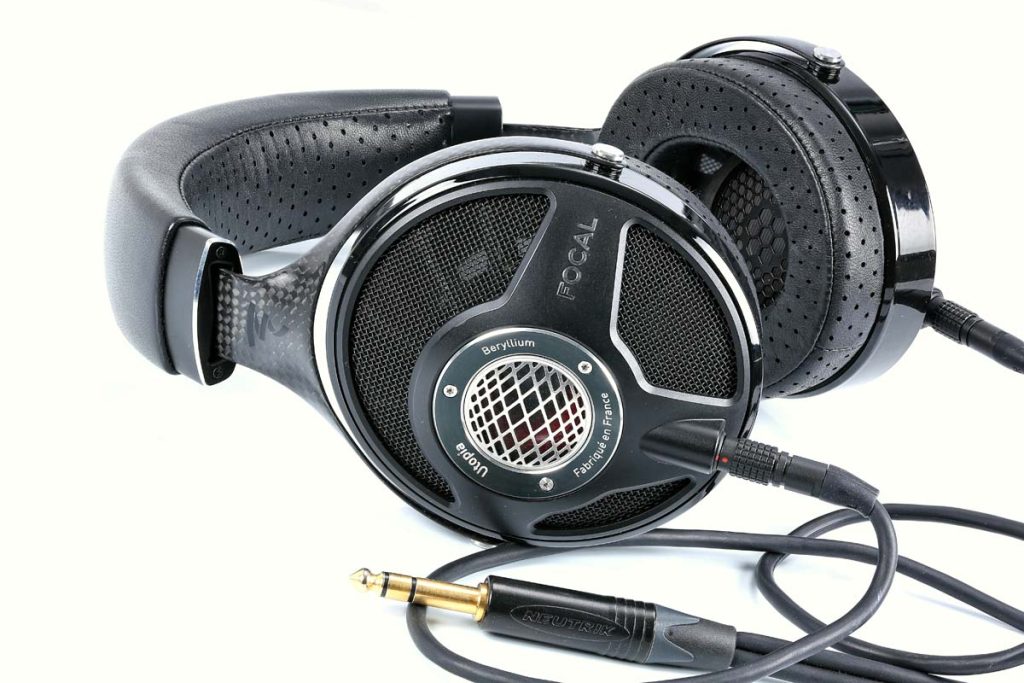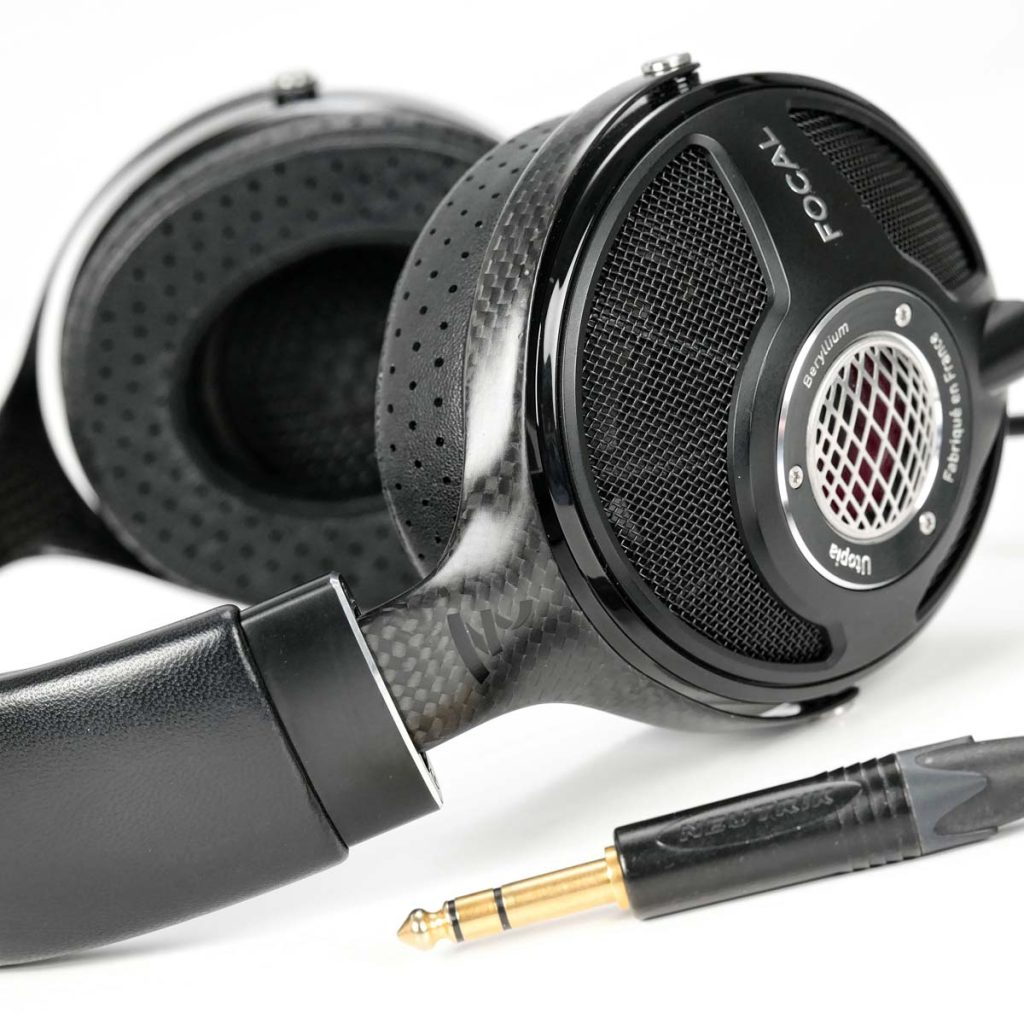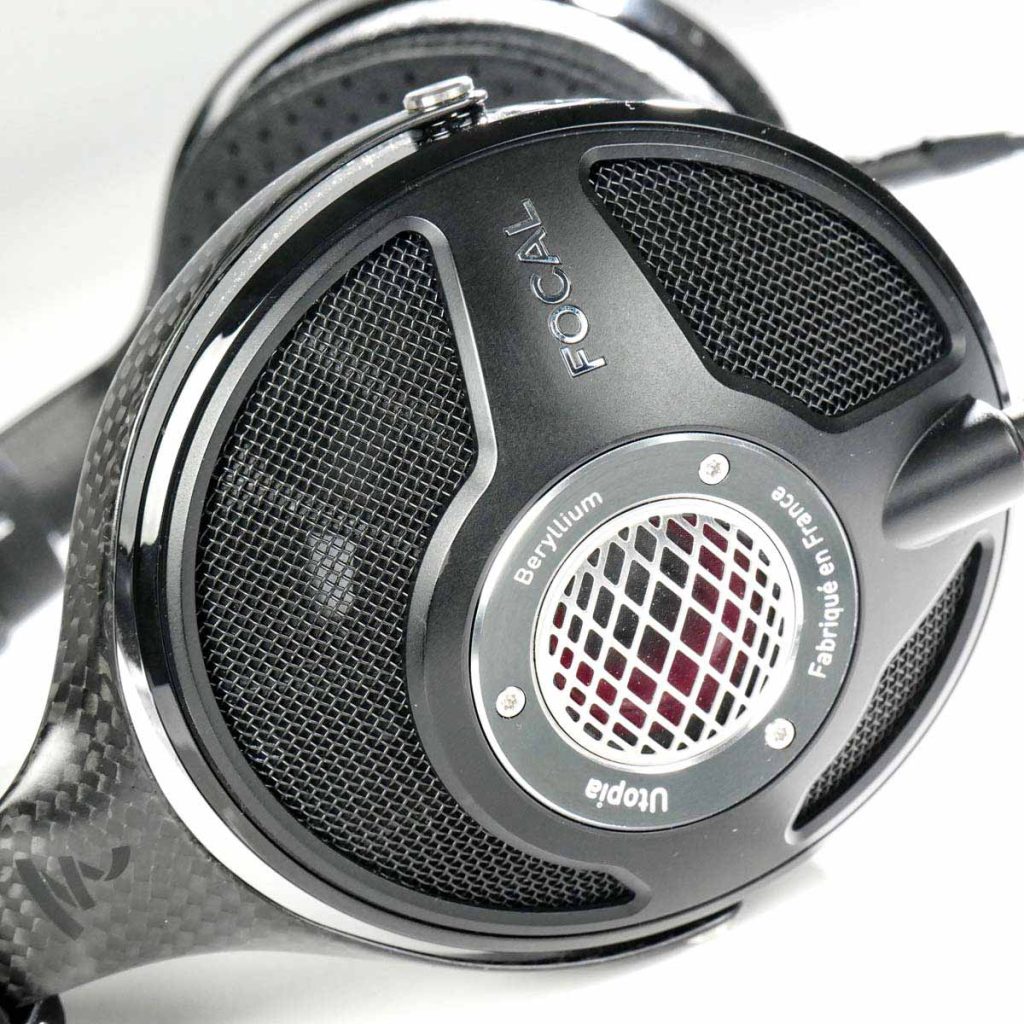The Sky’s The Limit
With the Focal Utopia, the Lyon-based company is revolutionizing the way headphones are made.
Mittendrin — “right in the middle” is the new approach to experiencing orchestra performances at the Konzerthaus Berlin, an approach that places members of the audience among the musicians. I couldn’t help but be reminded of past visits to such concerts when I first got to test Focal’s current top-of-the-range model, Utopia, as part of an extended listening session. Do you remember Utopia? It was and remains the loudspeaker series that has helped the high-end manufacturer from Lyon set standards for over 20 years, not least because of the legendary built-in beryllium tweeter. While the loudspeakers have been evolving over time and a third generation is now available, the headphones are a recent development. Here the planning engineers were deliberately told there were no limits. The aim, it appears, was to design a set of loudspeakers to sit on the listener’s head and perfectly integrate both three-dimensionality and immediacy, two factors that all too often are diametrically opposed to each other. Focal therefore sees the Utopia headphones as a set of “ultra-near-field monitors” that combine the advantages of headphones with the benefits of high-quality loudspeakers. Another challenge was to transfer the technical and sound-related properties of beryllium and make them compatible with the design options available for headphones to give the Utopia’s drivers a globally unique selling point. The main benefit of beryllium is its super-lightweight yet extremely rigid properties. However, it is unfortunately very expensive and difficult to process. But, let’s not forget the command from above: no limits. So the engineers at Focal developed a driver with a purely beryllium diaphragm in an M shape that would expand the emission surface area and thus benefits the bass range in particular. The fact the developers did not shy away from looking beyond their own company’s audio technologies and took inspiration from positive experiences in the car hi-fi sector has clearly paid dividends.
Not only inner beauty
Despite its extravagant inner workings, the Utopia looks refreshingly normal from the outside and simply resembles a set of headphones and not some sculptural design object. Upon closer inspection, especially with your fingers and sense of touch, you will encounter an extremely nice feeling that clearly points to impeccable workmanship. This should actually come as no surprise in this market segment but I would still like to take a moment and sing their praises. Despite the use of beryllium, the headphones weigh in at 490 grams, not exactly making them a lightweight. Ultimately, this is due to the extremely strong magnets that generate a whopping flux density of 1.15 tesla. Even if most of the headphones I own are lightweight, none of them feel nicer or more comfortable — and I’m saying that as someone known for wearing glasses and having a squareshaped head. If you decide to search for clues by touching the Utopia headphones’ individual components while wearing them and give them a gentle jiggle here and there, you quickly realize it’s the ear cushions that make them so comfortable. That has less to do with the soft lambskin leather they’re made of and more to do with the memory foam cushions hidden underneath. What’s more, the minimally asymmetrical design enables optimal weight distribution. With an impedance of 80 ohm, the Utopia headphones are a light sparring partner for the driving amplifier. Neither my studio specialist from Grace Design nor the Bryston BHA-1 are ever seriously put off their stride by them. Overall, the Utopia headphones react with impressive sensitivity to the tonal nuances of both headphone amplifiers: Grace Design makes the music appear ever so slightly faster, with the Utopia headphones also responding to their cross-feed option. Bryston, on the other hand, adds a little more bass, which prompts us to conclude that the Utopia headset is a particularly noteworthy recent release that doesn’t sit at the top of a listening chain but rather synergistically interacts.
Absolutely perfect balance of sound
Let’s start with some piano music: Even a perfectly produced piano recording in terms of tone and dynamics is not a sure-fire success when it comes to playback. The balance of bass and treble, the relationship between instrument and room, and the presentation of nuances related to different playing techniques all represent Herculean tasks in and of themselves. For starters, we have the complete edition of Arthur Lourié’s piano music with Moritz Ernst. This is a good example of an interpretive and technical recording. Here, the Utopia headphones are the ideal partner for the pianist. The left hand’s powerful block chords fill the room as if produced out of thin air, while the right hand’s impressionistic arpeggios effortlessly unfold with tonal nuances. In the treble range, excessive treble spotlighting is clearly not the Utopia headphones’ thing. They don’t try to light up spaces that simply don’t exist. The unpleasant effect of such a high-frequency accentuation in piano music can be experienced with older, poorly produced piano recordings, that occasionally tend to sound like they are rattling or are often even distorted. Keith Jarrett’s first ever ECM recording Facing You is one such example. Far, far from the label’s later ideal sound, a track like “Ritooria” features high-frequency distortions even in the reworked 24/192 remastered version. The Focal headphones nonetheless do not engage in overstatement and, as a result, allow the distortion to grow excruciating. But the headphones also don’t try to do the opposite, and the music remains as it is. You certainly can’t claim they try to sedate anything. Of course this also means that flimsy and spatially flat recordings such as Ryan Adams’ 1989 are not artistically enhanced or enriched. Where no bass is to be found in the recording, none is developed, which brings us neatly to the Utopia headphones’ bass: Open-back headphones sometimes have a design-related vulnerability. To avoid making any lazy compromises, we reach for the shelf where the old drum and bass disks are stored and grasp an absolute classic of this genre, LTJ Bukem’s Earth. Though the break-beats sound like they are carved in stone, so dry and sharp, they don’t push the drivers to their technical design limit, even at a high volume. I’ve never heard this CD sound like this before. That the bass can still swing loosely despite its stability becomes evident with Charlie Haden’s legendary Closeness Duets. Without a doubt, these headphones prove they are true all-rounders across all genres.
Placing the listener on the podium with the conductor
Since the Utopia headphones don’t have any weakness at all in the low-frequency range and provide the music a coherent fundamental tone base in every situation, the open-back headphone principle can unfold maliciously in terms of three-dimensionality and sound quality without the sound experience ever tending to be arbitrary in any way. Conversely, if anything were to describe the properties of these headphones, then it would have to be the defined and focused sound. You consistently get the impression you are in the immediate presence of the music, especially with orchestral music. A prime example of a showpiece is the “Turkey Trot” from Leonard Bernstein’s Divertimento, especially the recording by Reference Recordings under conductor Eiji Oue. After my previous listening experience, I expected a formidable reproduction with the appropriate dynamics and proper grandeur when the trombones and tubas cheekily strike up with the timpani and bass drum. But I was truly bowled over by the exceptionally clean, clear, precise playback of the intricate, tricky rhythmic changes and the perceivable acoustic overtone spectrum of the small wooden percussion instruments and the xylophone in combination with the clarinets. You are definitely “right in the middle” here. Even if it was Focal’s philosophy from the outset to design loudspeakers to sit on your head, you never hear the music at an improper distance. You get more of a spatial impression from the conductor’s position — the privileged combination of spatial depth and stage breadth with a simultaneous sense of immediacy. It highlights the truly special and, as a result, is actually what is utopian about the design behind these headphones. The fact that Focal’s development department was given free rein with no limits has really paid off: Even if the headphones answer to the name of Utopia, their utopian sound has now become a reality thanks to the know-how in Lyon.
Headphones
Focal Utopia
Design principle: open-back, circumaural | Chassis: beryllium M-shaped diaphragm, 40 mm | Impedance: 80 Ω | Frequency response: 5 Hz–50 kHz | Sound pressure level: 104 dB (1 mW, 1 kHz) | Weight: 490 g | Cable: 4 m, removable | Plug: 6.3 mm jack, 2 x 9.5 mm (Lemo) | Warranty period: two years | Price: €4,000
Music Line Vertriebs GmbH
Hainbuchenweg 14–18
21224 Rosengarten
Germany
Phone +49 4105 77050

